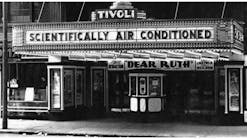After scoping out a new project, a client and I entered the “chichi” boutique next door. When he marketed the space the previous fall, he needed to have the space ready for any kind of tenant, so I had selected two HVAC units sized to allow flexibility. The tenant's contractor would design and install the ductwork to suit the tenant's needs as part of the tenant fitout. The new tenant now had been in business a while, and we stopped in to see how everything was going.
“How has the air conditioning been?” my client asked the sales clerk.
“Fine,” she answered.
“Well, actually, it has not been so good,” the manager said as she joined us. “Especially in the afternoon, when the sun shines through the windows, it really gets too warm in here.”
The temperature in the space was 73°F, but the thermostat was set at 70°F, and it was not that sunny out. The system should not have had much trouble reaching 70°F. I took a look around and saw that the tenant had reused existing sill-height grilles along the storefront windows, which had been left from a previous tenant, in addition to putting in new ceiling outlets. However, there did not seem to be much air coming out of the perimeter grilles. The air that was coming out was not very cold.
A quick trip to the basement solved the mystery. The space had two 10-ton air-conditioning systems. One of the systems fed ductwork overhead, and it had been working fine. The other system had been connected to feed only the perimeter grilles. That system's fan was running, but the refrigeration was not. No wonder the store was struggling — only half of its cooling was working.
Considering the weak airflow from the perimeter grilles, I bet that the system was not moving enough air to support 10 tons of cooling. The cooling coil could have iced up and cut out weeks earlier.
Sure enough, there was a water stain on the floor beneath the refrigeration piping where the melting ice must have dripped. I explained to my client that the solution could be as simple as speeding up the fan or that some ductwork might need to be reworked to get full airflow to the perimeter grilles. The tenants had an airflow problem to solve, but I knew they would be fine once both of their units were working properly.
Gary Elovitz
Energy Economics Inc.
Newton Centre, Mass.








